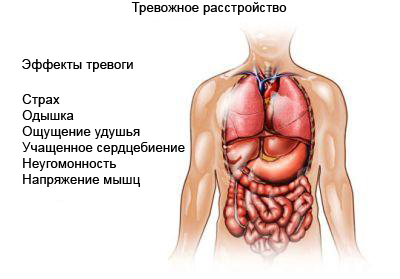Picks
Description of panic disorder
Panic disorder is one of the types of anxiety disorders and is characterized by repeating and unpredictable nervous breakdowns, known as panic attacks. Panic attack is accompanied by physical symptoms, similar to a heart attack or other life -threatening diseases.
Intensive anxiety often develops between the episodes of panic. When panic attacks become more frequent, People begin to avoid situations, that can cause them. Panic attacks can lead to agorafobia, in which fear appears when being in an unknown place.
The causes of panic disorder
Scientists continue to look for the exact cause or cause of panic disorder. The main reasons may be:
- Family history;
- Biological factors;
- Stressful life events;
- Increased sensitivity to physical sensations.
Risk factors
Factors, increasing the risk of panic disorder, relate:
- Paul: female;
- Age: Youth or young;
- The presence of another alarming disorder;
- The presence of patients with panic disorder in the family.
Symptoms of panic disorder
Panic attacks usually occur unexpectedly and repeatedly. They include many of the above symptoms:
- Sudden and intense attacks of fear;
- Cardiopalmus;
- Chest pain, pressure or discomfort;
- Difficulty breathing;
- Feeling of suffocation or lump in the throat;
- Excessive sweating;
- Dizziness;
- Nausea;
- Tingling or numbness of some parts of the body;
- Chills or heat;
- Tremor;
- A feeling of unreality, or branches from the body;
- The desire to run away ;
- Fear of death due to myocardial infarction, suffocation, accident, etc.;
- Stomach ache.

Diagnosis of panic disorder
The doctor asks about the symptoms and medical history, produces physical examination. Since some symptoms of panic disorder are similar to signs of heart disease, Digestive System, and/or problems with the thyroid gland, conducted tests, which can exclude the physical causes of symptoms.
It is necessary to inform the doctor about physical and psychological symptoms. You also need to inform the doctor, if:
- There were attacks of unmotivated sadness or hopelessness;
- Alcohol or drugs were used to get rid of symptoms.
Treatment of panic disorder
The purpose of treatment is to reduce the frequency and intensity of panic attacks. The treatment or psychiatrist will conduct treatment. They can be assigned to the following procedures:
Kognitivnaya povedencheskaya therapy
Cognitive behavioral therapy can prepare patients for situations, which can cause panic attacks. Therapy allows:
- Learn to recognize the causes of fears;
- Gradually change the distorted stereotypes of thinking;
- Learn to perform breathing exercises, which contribute to relaxation;
- Reduce the fear and a sense of horror.
Medications
The doctor may prescribe one or more of the following drugs:
Antidepressants
- Tricyclic antidepressants, Such as clomipramine (Anafranil) or imipramine (Tofranil);
- Monoamine oxidase inhibitors (Had), Such as phenelzine (Raided) Or a trailcypromine;
- Selective serotonin reuptake inhibitor (SSRIs), such as sertraline (Zoloft), paroxetine (Paxil), fluoxetine (Prozac), citalopram (Ceech);
It is necessary to take into account, that taking medication was sometimes associated with a deterioration in symptoms and the appearance of suicidal thoughts. These adverse consequences are the most common among young people. Effects, usually, arise at the beginning of treatment or with an increase or decrease in the dose. Some antidepressants in the SioSC class, which can cause side effects:
- Prozac (fluoxetine);
- Zoloft (sertraline);
- Paxil (paroxetine);
- Luvox (fluvoxamine);
- Ceech (citalopram);
- Lexapra (escitalopram).
Anti-lane drugs (benzodiazepines)
- Alprazolam (Xanax);
- Clonazepam (Klonopin);
- Lorazepam (Ativan).
Studies have shown, that the greatest effectiveness of treatment is achieved with combined treatment (Cognitive behavioral therapy and medication).
Changes in diet
Some doctors think, that the rejection of caffeine, which is contained in coffee, tea, chocolate, wheel, some soda drinks, can reduce panic attacks.
Prevention of panic disorder
To reduce the likelihood of a panic disorder, it is necessary:
- Avoid caffeine;
- Avoid alcohol;
- Avoid drug use;
- More rest.
